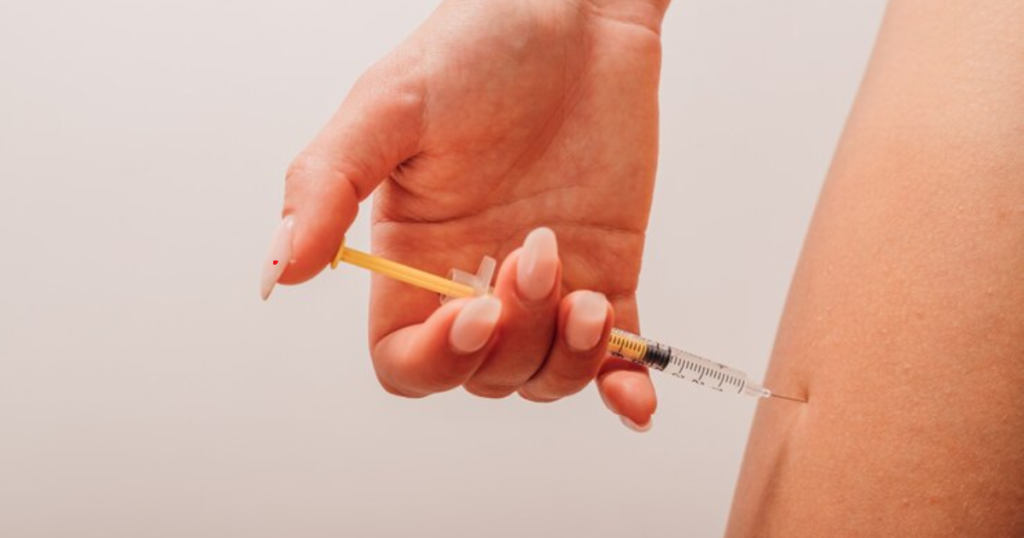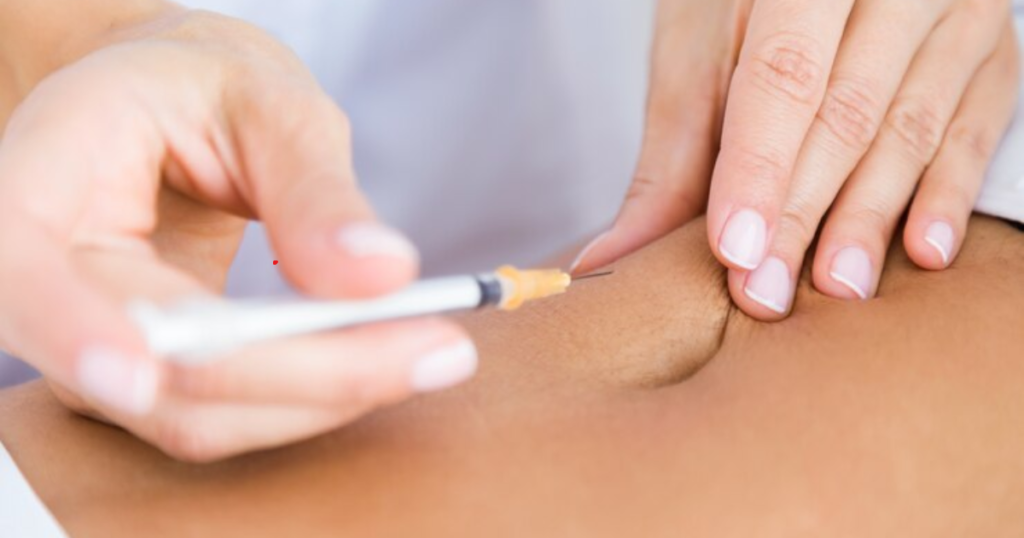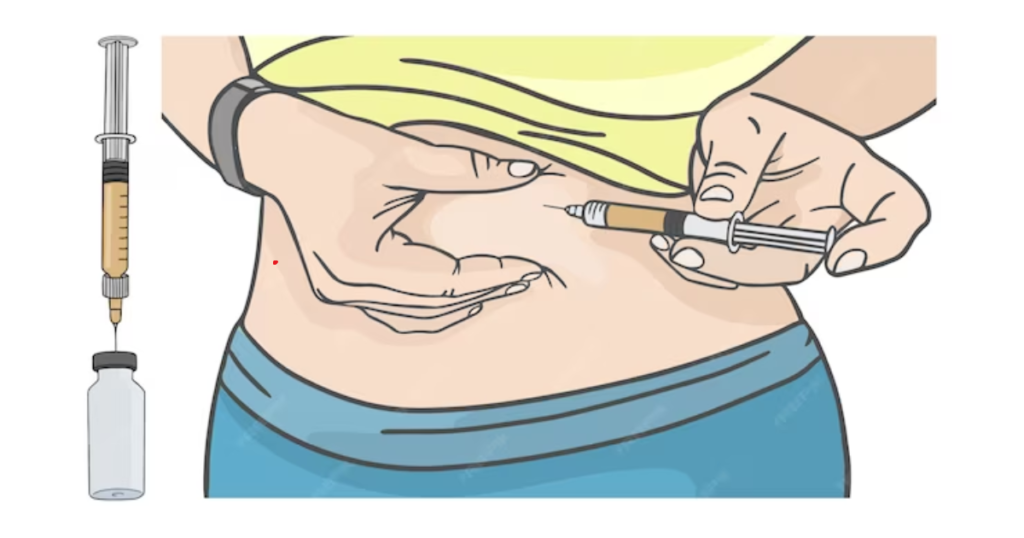Semaglutide is a special medicine that helps with type 2 diabetes and being overweight. When you use it, you have to be really careful to make sure it works well and won’t harm you. This guide will show you exactly how to inject yourself a shot of semaglutide, step by step, so you can take care of your treatment without any worries.
What is Semaglutide?
Semaglutide belongs to a class of medications called glucagon-like peptide-1 (GLP-1) receptor agonists. It works by mimicking the action of a hormone in the body called GLP-1, which helps regulate blood sugar levels and promotes weight loss.
Semaglutide is typically prescribed for individuals with type 2 diabetes who have not achieved adequate blood sugar control with other medications, as well as for those struggling with obesity.
Related: 5 Signs Your Adderall Dose Is Too Low & How to Fix?
Preparation for Semaglutide Injection
Preparing for a Semaglutide injection involves several steps to ensure safety and effectiveness:
- Wash Hands: Thoroughly wash your hands with soap and water to minimize the risk of infection.
- Gather Supplies: Collect all necessary supplies, including the Semaglutide pen, alcohol swabs, and a sharps disposal container.
- Check Expiry: Ensure that the Semaglutide pen is not expired. Using an expired medication may affect its potency and effectiveness.
- Inspect Pen: Check the Semaglutide pen for any signs of damage or leakage. Do not use the pen if it appears damaged.
- Clean Injection Site: Select an injection site (typically abdomen or thigh) and clean the area with an alcohol swab. Allow the area to dry completely before proceeding.
Where Should You Inject Semaglutide?
Semaglutide injections are typically administered subcutaneously, which means they are injected into the fatty tissue just beneath the skin. The recommended injection sites for Semaglutide are usually the abdomen (around the belly button area) or the thigh.
It’s important to rotate injection sites to prevent irritation or lumps from forming under the skin. However, always follow the specific instructions provided by your healthcare provider or the medication’s packaging for the most accurate guidance on injection sites.

How to Inject Semaglutide?
- Prepare the Injection Pen: Remove the cap from the pen and check the liquid for clarity. If it appears cloudy or discolored, do not use it.
- Clean the Injection Site: Swipe the chosen injection site with an alcohol swab and allow it to air dry.
- Prime the Pen: Dial the dose as instructed by your healthcare provider and press the injection button until a drop of liquid appears at the needle tip.
- Inject the Medication: Hold the pen at a 90-degree angle to the skin and insert the needle fully. Press the injection button to deliver the dose.
- Hold and Remove: Keep the needle in place for a few seconds to ensure the full dose is delivered. Then, remove the needle from the skin.
- Dispose of the Needle: Place the used needle in a sharps disposal container immediately after use.
1. Proper Storage
Until the first use, keep semaglutide pens in the refrigerator at 36°F to 46°F (2°C to 8°C). Once used, they can be kept at room temperature (up to 86°F or 30°C) for up to 56 days. Do not expose the pen to direct heat or sunlight.
2. Preparing the Injection Site
Clean the injection site with an alcohol swab and let it dry fully. Common injection locations include the abdomen, thighs, and upper arms. Rotate injection locations to reduce the likelihood of tissue injury or discomfort.
3. Priming the Pen
Prime the pen before the first usage and anytime the needle is changed, following the manufacturer’s recommendations. This provides optimum dosing and eliminates air bubbles from the pen.
4. Administering the Injection
Holding the pen at a 90-degree angle to the skin, insert the needle quickly. Depress the plunger completely to give the medication. Hold the needle in place for a few seconds before removing it.
5. Disposal of Used Pens
Dispose of used pens properly in a sharps container to avoid needle sticks. Do not reuse needles or share injection pens because this increases the risk of contamination and infection.

Potential Side Effects of Semaglutide Injection
Semaglutide injection, like any medication, may have potential side effects. These can include:
- Nausea and Vomiting: Some individuals may experience nausea or vomiting, especially when starting the medication. This usually improves over time.
- Diarrhea or Constipation: Changes in bowel habits, such as diarrhea or constipation, can occur with semaglutide use.
- Abdominal Pain: Some people may experience abdominal discomfort or pain.
- Decreased Appetite: Semaglutide can lead to a decrease in appetite, which may result in weight loss.
- Hypoglycemia: Particularly when used in combination with other antidiabetic medications like insulin or sulfonylureas, semaglutide may cause low blood sugar levels (hypoglycemia).
- Injection Site Reactions: Redness, swelling, or itching at the injection site are possible side effects.
- Pancreatitis: In rare cases, semaglutide may increase the risk of pancreatitis, which is inflammation of the pancreas.
- Kidney Problems: Some individuals may experience kidney-related issues such as changes in urine output or signs of kidney problems.
- Thyroid Tumors: There is a potential risk of thyroid tumors, particularly in rodent studies. However, this risk’s relevance to humans is still under investigation.
- Allergic Reactions: Though uncommon, allergic reactions to semaglutide can occur, presenting as rash, itching, swelling, severe dizziness, or difficulty breathing.
Tips for Successful Semaglutide Injection
Here are some tips for successful semaglutide injection:
- Follow Instructions: Read and follow the instructions provided by your healthcare provider and the medication’s packaging carefully.
- Injection Site: Choose a clean and suitable injection site, such as the abdomen, thigh, or upper arm. Rotate injection sites to avoid irritation or lumps.
- Preparation: Wash your hands thoroughly before handling the medication and injection supplies.
- Inspect the Pen: Check the medication pen for any damage or defects before using it. Do not use if the pen or needle is damaged.
- Prime the Pen: If necessary, prime the pen according to the manufacturer’s instructions to remove air bubbles and ensure the correct dose is administered.
- Inject at the Right Angle: Insert the needle into the skin at a 90-degree angle (perpendicular to the skin) to ensure proper delivery of the medication.
- Slow and Steady: Inject the medication slowly and steadily to minimize discomfort and ensure accurate dosing.
- Hold the Injection: After injecting the medication, hold the needle in place for a few seconds before removing it to ensure all the medication is delivered.
- Dispose of Needles Properly: Safely dispose of needles and pens according to local regulations or guidelines to prevent accidental needle sticks.
- Keep Track of Injections: Keep a record of your injections, including the date, time, dose, and injection site, to help monitor your treatment and identify any issues.

Conclusion
In short, it’s important for people with type 2 diabetes and obesity to learn how to inject semaglutide. This helps them take their medicine safely. By following the steps in this guide, they can make sure they’re doing it right. If they keep practicing and listen to their doctor, they can get healthier.
People Also Ask
What is Semaglutide and why is it injected?
Semaglutide is a type 2 diabetes medication that mimics the action of GLP-1 hormone, but is not taken as a pill due to stomach digestion. Instead, it is injected under the skin to enter the bloodstream.
How do I prepare to inject Semaglutide?
Before injecting semaglutide, make sure you have all your supplies ready: the semaglutide pen, alcohol wipes, and a sharps container for disposal. Wash your hands with soap and water, and choose an injection site on your stomach, thigh, or upper arm. Rotate injection sites to prevent skin irritation.
How do I inject Semaglutide?
Start by cleaning the injection site with an alcohol wipe and let it dry. Then, remove the cap from the pen and attach a new needle. Dial your prescribed dose on the pen, and pinch a fold of skin at the injection site. Insert the needle at a 90-degree angle and press the injection button. Hold for a few seconds before removing the needle and disposing of it safely.
Does injecting Semaglutide hurt?
You might feel a little pinch when inserting the needle, but most people find that it’s not too painful. Some areas might be more sensitive than others, so you can try different injection sites to see which one feels the most comfortable for you. If you’re nervous, you can ask your doctor or nurse to show you the best technique.
What should I do after injecting Semaglutide?
After injecting semaglutide, dispose of the needle in a sharps container. Expect a small bump or redness at the injection site, but it usually subsides. Seek healthcare for unusual symptoms, monitor blood sugar levels, and follow doctor’s instructions for diet and exercise.









Leave a Reply